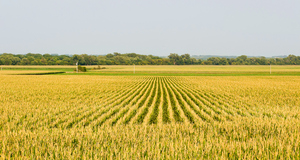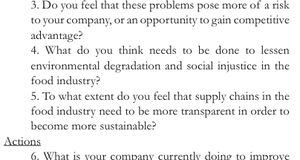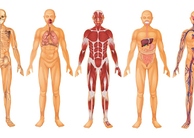Student VoicesThe Consequences of Food Waste
By
2014, Vol. 6 No. 04 | pg. 3/3 | « Furthermore, the recycling of methane gas, while not a solution to food waste, could help alleviate the amount of potent greenhouse gas emitted into the atmosphere from the anaerobic digestion of foodstuffs in landfills. Methane, while twenty-one times more harmful than carbon dioxide when introduced into the atmosphere, has also been found to be an environmentally beneficial (Stuart, 2009). The digestion of food waste, manure, and slaughter-house by-products in large tanks can be burnt for electricity, that the Department of Environmental Quality and the Nebraska Public Power District estimated would provide enough energy to power 135,000 homes monthly (Oreopoulou & Russ, 2007).. Additionally, purified methane pumped directly into gas mains can be used to heat homes, or bottled as diesel capable of running vehicles. Sweden, Switzerland and Germany all have fleets of buses, taxis and trains that run completely off of energy from slaughterhouse waste (Stuart, 2009). While at the Altamont Landfill in Northern California, methane gas is converted into “liquefied natural gas that is then used to fuel Waste Management’s garbage trucks. Altamont Landfill’s liquid natural gas system is the largest in the world,” demonstrating that methane has the potential to be far more than simply a harmful greenhouse gas (Skene, 2012) Due to the complex nature of the waste cycle, breaking this sequence requires complex solutions to be implemented throughout the entirety of the food system. Reducing greenhouse gas emissions further, food and energy waste can also be accomplished through the modification of supplier production, supermarket regulation and consumer shopping and cooking habits. Suppliers would raise the efficiency of production while diminishing waste by preparing ingredients separately, putting together finished products only when supermarkets place an order, enabling unused, separate ingredients to be incorporated into other products. This system tested and designed by Dr. Shahin Rahimifard and his colleagues saved one supplier between 520,000-780,000 euros in a single year, a fifth of the cost of the entire system of operation (Stuart, 2009). Additionally, encouraging the retail of “Class II” ugly produce, food whose packaging may be slightly damaged and items surpassing the “sell-by” date at discount prices would decrease waste while building economic revenue for farmers and supermarkets through the retail of produce that would otherwise be needlessly thrown out. The incorporation of ugly produce into supermarkets would alleviate pressures put upon farmers to overplant in order to provide cosmetically approved fruit while systematically re-educating consumers on the true beauty of fruit that extends far beyond flawless paper thin skin. The ability to transform the face of waste food while advocating change within supermarkets, shopping, and cooking lies in the hands of the everyday grocery shopper. Within the United Kingdom, two thirds of household waste is thrown out due to produce spoilage from not being cooked in time while an additional third results from serving sizes that are too big (Gunders, 2012). By taking stock of food already in the household and forming a list, shoppers can purchase the items they require without acquiring duplicates of items or other additional, unneeded foodstuffs. Overstocking of produce leads to lost food that disappears into the ethers in the back of the refrigerator, never to be seen again until the pungent smell of rot is the catalyst for a full fridge-cleaning. Keeping food visible, freezing items for later use, and disregarding “sell by” and “best by” dates decreases economic and food waste. In the cycle of waste, hungry citizens hold the greatest power for they can change not only their own household waste dynamic, but also that of the supermarkets and in turn, their suppliers. Change must come through the voices of the consumers because the squandered food is wasted in their name.ConclusionFood waste is an environmental, economic, and ethical conundrum that leads not only to the loss of caloric intake but also to the needless destruction of finite resources. The complexity of the food system enhances the complexity of the food waste problem, but this issue is nevertheless reversible and steps toward a more sustainable food system can be undertaken locally. Individual behavior can reshape food waste at home and lead to broader changes in the food production ecosystem. Like most of the student body, I am myself guilty of growing dispassionate toward food and apathetic towards food waste, as I thoughtlessly toss food with the privileged belief that more is always readily at my disposal. To act locally in the effort to de-throne needless waste, communities must work to overthrow their mindless roles in the food waste cycle. I must hold myself accountable for waste, re-evaluate my relationship with food, and continue to question the unsustainable and unethical food system that encourages waste, as we all must if we are to feed growing populations and stave off looming environmental disasters. ReferencesBloom, J. (2010). American wasteland: How America throws away nearly half of its food (and what we can do about it). Cambridge: Da Capo Press. Canning, P., Charles, A., Huang, S., Polenske, R. K., & Waters, A., (2010, March) Energy use in the U.S food system. United States Department of Agriculture. Economic Research Report Number 94. Retrieved from http://www.ers.usda.gov/publications/err-economic-research-report/err94.aspx#.UWc6KbVJNPI Department of Sustainability, Environment, Water, Population and Communities, (2006).Salinity and acidity. Retrieved from Australian Government website: http://www.environment.gov.au/soe/2006/publications/commentaries/land/salinity.html Gunders, D. (2012.). Wasted: How America is losing up to 40 percent of its food from farm to fork to landfill. Natural Resources Defense Council, Retrieved from http://www.nrdc.org/food/files/wasted-food-IP.pdf Kingsolver, B., Hopp. L. S. & Kingsolver, C. (2007). Animal, Vegetable, miracle: A year of food life. New York: Harper Perennial. McDonough, W., & Braungart., M. (2002). Cradle to cradle: Remaking the way we make things. New York: North Point Press. Menas, C., Adenso-Diaz, B.B., & Yurt, O. (2011) The causes of food waste in the supplier-retailer interface: Evidences from the UK and Spain. Resources, Conservation and Recycling 55(6), 648-658 Metcalf, J. (2013, March 20). Interview by K. K. Payne Oliver, R. (2007, September 24). All about: Food waste. CNN. Retrieved from http://articles.cnn.com/2007-09-24/world/food.leftovers_1_food-waste-greenhouse-gas-methane-emissions?_s=PM:WORLD Pollan, M. (2006). The omnivore’s dilemma: A natural history of four meals. New York: The Penguin Press. Quested, T.E., Parry, A. D., Easteal, S. S., & Swannell, R. (2011) Food and Drink Waste from Households in the UK. Nutrition Bulletin. 36(4), 460-467. Skene, J. (January, 2012 23).Methane moves from landfill to gas tank. Retrieved from http://science.kqed.org/quest/2012/01/23/methane-moves-from-landfill-to-fuel-tank/ Stuart, T. (2009). Waste: Uncovering the global food scandal. New York: W.W. Norton & Company. United States Census Bureau, U.S Department of Commerce. Population clock. Retrieved from website: http://www.census.gov/popclock/ U.S Environmental Protection Agency, Reducing food waste for businesses. Retrieved from website: http://www.epa.gov/foodrecovery/ Westendorf, L. M., (Ed.). (2000) Food waste to animal feed. Ames: Iowa State University Press. Oreopoulou, V., & Russ, W. (Eds.) (2007). Utilization of by-products and treatment of waste in the food industry. New York: Springer. Suggested Reading from Inquiries Journal
Inquiries Journal provides undergraduate and graduate students around the world a platform for the wide dissemination of academic work over a range of core disciplines. Representing the work of students from hundreds of institutions around the globe, Inquiries Journal's large database of academic articles is completely free. Learn more | Blog | Submit Latest in Opinion |
















